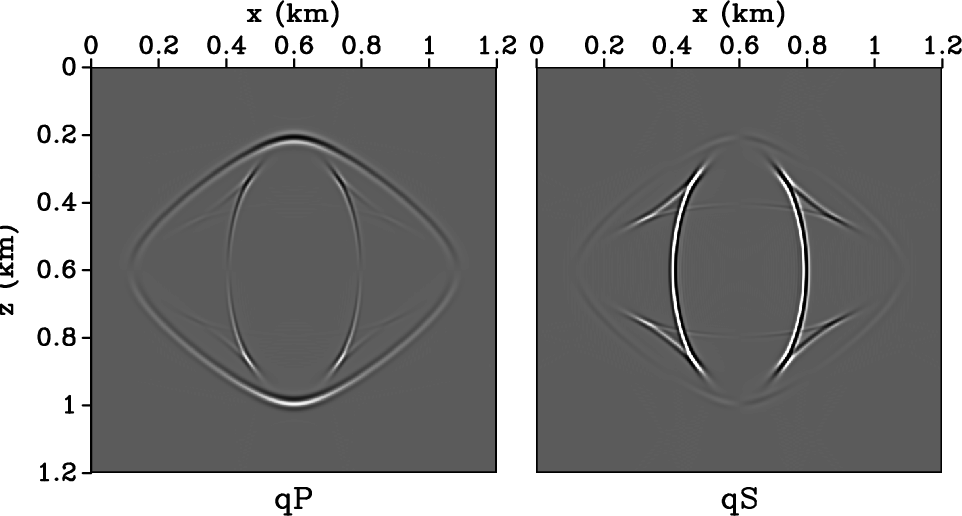|
|
|
|
Elastic wave-mode separation for VTI media |
In TI media, SV and SH waves are uncoupled most of the time, where SH wave is polarized out of plane. One only needs to decompose P and SV modes in the vertical plane. The plane wave solution is sufficient for most TI media, except for a special case where there exists a singularity point at an oblique propagation angle in the vertical plane (a line singularity in 3D), at which angle SV and SH wave velocities coincide. At this point, the SV wave polarization is not uniquely defined by Christoffel equation. S waves at the singularity are polarized in a plane orthogonal to the P wave polarization vector. However, this is not a problem since we define SV waves polarized in vertical planes only, therefore I remove the singularity by using the cylindrical coordinates. This situation is similar to S wave-mode coupling in orthorhombic media, where there is at least one singularity in a quadrant. However, as pointed out by Dellinger and Etgen (1990), the singularity in orthorhombic media is a global property of the media and cannot be removed, therefore the separation using polarization vectors in 3D orthorhombic media is not straightforward.
The anisotropic derivative operators depend on the anisotropic medium
parameters. In Figure 19, I show how sensitive the
separation is to the medium parameters. One elastic wavefield snapshot
is shown in Figure 7(a) for a VTI medium with
![]() and
and
![]() ,
,
![]() . I try to separate
the P and SV modes with (a)
. I try to separate
the P and SV modes with (a)
![]() ,
,
![]() , (b)
, (b)
![]() ,
,
![]() and (c)
and (c)
![]() ,
, ![]() . The
separation shows that parameters (a) have good separation, showing the
difference in
. The
separation shows that parameters (a) have good separation, showing the
difference in ![]() and
and ![]() is important. The worst case
scenario is shown by parameters (c), where isotropy is assumed for
this VTI medium.
is important. The worst case
scenario is shown by parameters (c), where isotropy is assumed for
this VTI medium.



|
|---|
|
pA1,pA2,pA3
Figure 19. P and SV wave mode separation for a snapshot shown in Figure 7(a). The true medium parameters are |
|
|
|
|
|
|
Elastic wave-mode separation for VTI media |